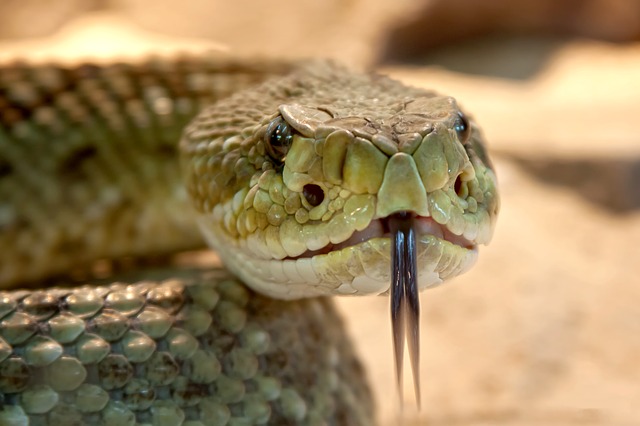A rattlesnake gliding from one hiding spot to another in the middle of a hot summer afternoon is something you’re not supposed to see. Like your woman stirring eggs on the stove, her other hand down the front of her pants, scratching. Or your kid writing in some dumb school essay that the living person he most admires is his Uncle Paul because the man lives in Aruba. He sends postcards of sunsets on the back of which he scrawls sentences for which he is always the subject, the object an ever-revolving list of daredevil stunts such as swimming with sharks, jumping out of airplanes.
Vincent’s boy Roy is running around the lakeside park, detonating water balloons at other eight-year-old boys, while Vincent tends the grill. Roy is dressed head-to-ankle in green, his face concealed by a square of hand-painted cardboard. He’s a creeper, Maryanne said, the water balloons bombs, something to do with the birthday party’s Minecraft theme. Vincent misses the days of Spider-Man, a character he could appreciate: An ordinary guy who makes the most of what could have otherwise been an unfortunate circumstance. This is what he’s thinking when he sees the snake.
Vincent sets down the grilling fork and yells to Roy and his friends that there’s a rattlesnake.
The boys pay him no attention. They keep right on chasing each other until one boy, his hair wispy and white, like the fluff on the head of an eagle chick, says, “Snake! Snake!” Only then do the boys come running, plastic swords in hand.
“Is it a diamondback?” Eaglet says, his eyes flicking to Vincent.
“A western diamondback, yes,” Vincent says, though he wouldn’t bet the farm.
The boys are so quiet, so attentive that Vincent finds himself saying, “Have you ever seen someone catch one?”
They’re as interested in Vincent now as they are the snake, even Roy.
“It’s not that hard really,” Vincent says, though he’s never actually attempted it himself, only watched his father do it and a few of his uncles when he was a kid.
The boys’ faces burn bright; they’re busted wide open, like supernovas. No, the fucking Big Bang. The beginning of everything. How we got here, Vincent’s sixth grade science teacher said many years ago as he projected onto a white screen an image of a tie-dye explosion.
The opposite of the cinched-tight look Roy gave Vincent two days ago when Vincent told him his Uncle Paul wasn’t so admirable. The man has a kid he never sees, Vincent told Roy.
Vincent eyes the parking area, confirms that Maryanne hasn’t yet returned with the cake and ice cream. He raises his voice. “The key is to be confident.”
Or to fake it, the way the snake does. Its diamond patterning, that hollow rattle—like trash talk the way these displays intimidate, when in and of themselves they pose no real threat.
Of course, the animal’s fangs can do harm, but Vincent knows that rattlesnakes are shy animals. All that scaly armor is a costume, like Roy’s cardboard mask. Only a rattlesnake never unmasks itself, does it?
“Once you pounce on a rattlesnake, there’s no changing your mind,” Vincent says, as much to himself as to the boys. “And don’t you let go, no matter how violently the snake tries to jerk itself loose.”
At that, Vincent holds his breath and dives toward the snake. He wraps his fist so tight around the snake’s head that he wonders if he might crush the animal’s skull.
When he finally grasps the tail, a task comparable to playing whack-a-mole, Vincent rolls onto his back in the dirt, holds the snake up in the air. For a moment, he just lies there, studies the animal’s face. The scales that make up its nose and fill in the areas around its eyes and mouth make him think of the kernels Roy tweezed from an ear of dried Indian corn during kindergarten open house a couple years back. And the cobbled bones of his foot, revealed in an X-ray when he broke a toe. Misshapen and seemingly mismatched, but somehow they fit together.
What else Vincent told Roy two days ago: that when Paul was Roy’s age, he didn’t even know how many continents there were on Earth. That’s how dumb Paul was.
The funeral parlor: their father lay in a suit that, had he still been alive, he would have claimed he wouldn’t be caught dead in. (Their father had been wrong about so much, not the least of which being that he could clear the gap between one rock and another without falling to his death.) Their mother ran her hand through Paul’s hair, kissed his forehead. A woman Vincent didn’t know called Paul “Little Ronald” and said he was a “beautiful reminder of the cycle of life.” Vincent pictured a circular diagram of an egg becoming a tadpole becoming a froglet becoming a frog becoming an egg. From nothing to something to nothing again. The same thing would happen to Earth, to the entire universe. Such was the fate of all matter.
Five, Paul answered when an eleven-year-old Vincent quizzed him in the backseat of their mother’s car as they left the funeral home. When Vincent laughed, his mother eyed him angrily in the rearview mirror, and he’d felt the particular ache of a thing compressed.
Now, watching Roy’s eyes widen with wonder through the holes Maryanne helped him cut into the green cardboard mask, Vincent relaxes.
